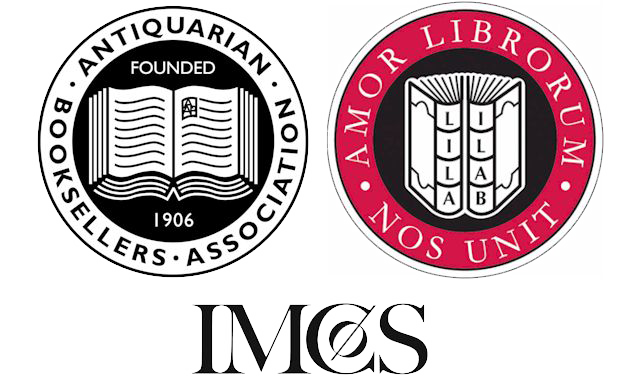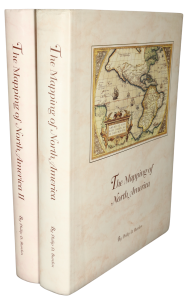Rare Maps and Prints
- World & Celestial
- North America
- West Indies, South & Central America
- British Isles
- British Isles
- English counties
- Large-scale
- Bedfordshire
- Berkshire
- Buckinghamshire
- Cambridgeshire
- Cheshire
- Cornwall
- Cumberland
- Derbyshire
- Devon
- Dorset
- Durham
- Essex
- Gloucestershire
- Hampshire
- Herefordshire
- Hertfordshire
- Huntingdonshire
- Islands
- Kent
- Lancashire
- Leicestershire
- Lincolnshire
- Middlesex
- Norfolk
- Northamptonshire
- Northumberland
- Nottinghamshire
- Oxfordshire
- Rutland
- Shropshire
- Somerset
- Staffordshire
- Suffolk
- Surrey
- Sussex
- Warwickshire
- Westmoreland
- Wiltshire
- Worcestershire
- Yorkshire
- Wales
- Scotland
- Ireland
- Western Europe
- Eastern Europe
- Middle East
- Africa
- Asia
- Australasia & Pacific
- Decorative Prints
- Title Pages
Mr. Philip D. Burden
P.O. Box 863,
Chalfont St. Giles, Bucks HP6 9HD,
UNITED KINGDOM
Tel: +44 (0) 1494 76 33 13
Email: enquiries@caburden.com
“In 1540 Sebastian Münster, who was to become one of the most influential cartographers in the sixteenth century, published his edition of Ptolemy’s ‘Geography’ with a further section of modern, more up to date maps. He included for the first time a set of continental maps, the America was the earliest of any note. Münster studied Hebrew at Heidelberg and was a scholar of geography, writing amongst other works the ‘Polyhistor’ … He was one of the first to create space in the woodblock for the insertion of place-names in metal type. The map’s inclusion in Münster’s ‘Cosmography’, first published in 1544, sealed the fate of ‘America’ as the name for the New World. The book proved to be very popular, there being nearly forty editions during the following 100 years.
“The Portuguese flag is shown flying over the South Atlantic and the Spanish one over her possessions in the Caribbean. The Strait of Magellan are named again, and ‘Mare pacificum’ appears for the first time on a printed map. Magellan’s ship ‘Victoria’, the only survivor of five vessels, appears in the middle of this ocean. Marco Polo’s influence can be seen with ‘Zipangri’ (Japan) appearing three years before the earliest known contact with Europeans, and also his ‘Archipelagus 7448 insularũ’. The Yucatan is still shown as an island and the lake at ‘Temistitan’ is depicted emptying into the Gulf of Mexico.
“North America is not shown as accurately as the southern half of the continent, it had to a large extent been neglected so far by explorers. When Giovanni di Verrazzano, in the service of Francis I of France, passed by the Outer Banks of the Carolinas in 1524 he mistook Pamlico and Albemarle Sounds for the ‘Oriental Sea’ that led to Cathay and the rich Spice Islands. Here Münster perpetuates this error and through the success of this book provided a huge impetus to the exploration of the region. The only place names occurring here are ‘C.Britonum’, marking England’s early explorations, ‘Corterati’, probably Newfoundland after the Corte Reals, and ‘Terra florida’. ‘FRANCISCA’ is named in honour of Francis I” (Burden).
This is a good example of the second state with the name ‘Regio Gigantum’ in South America moved slightly lower and to the right of the small river. It was published in the Latin edition of the ‘Geographia Universalis’ in 1545. Burden identifies that this state was actually issued earlier as the third state is found in the ‘Cosmography’ of 1544. Provenance: private English collection since 1990. Burden (1996) no. 12; Burmeister (1960); Harrisse (1892) pp. 607-9; Karrow (1993) p. 425 item 58-117; Kershaw (1993) pp. 1-12; Morison (1971) pp. 287-95 (Verrazzano sea); Nebenzahl (1990) p. 98; Ruland (1962); Sider (1986); Suárez (1992) p. 81; Winsor (1884) p. 18; Woodward (1970) studies the various uses of metal in woodblock printing; Wroth (1970).
“The Portuguese flag is shown flying over the South Atlantic and the Spanish one over her possessions in the Caribbean. The Strait of Magellan are named again, and ‘Mare pacificum’ appears for the first time on a printed map. Magellan’s ship ‘Victoria’, the only survivor of five vessels, appears in the middle of this ocean. Marco Polo’s influence can be seen with ‘Zipangri’ (Japan) appearing three years before the earliest known contact with Europeans, and also his ‘Archipelagus 7448 insularũ’. The Yucatan is still shown as an island and the lake at ‘Temistitan’ is depicted emptying into the Gulf of Mexico.
“North America is not shown as accurately as the southern half of the continent, it had to a large extent been neglected so far by explorers. When Giovanni di Verrazzano, in the service of Francis I of France, passed by the Outer Banks of the Carolinas in 1524 he mistook Pamlico and Albemarle Sounds for the ‘Oriental Sea’ that led to Cathay and the rich Spice Islands. Here Münster perpetuates this error and through the success of this book provided a huge impetus to the exploration of the region. The only place names occurring here are ‘C.Britonum’, marking England’s early explorations, ‘Corterati’, probably Newfoundland after the Corte Reals, and ‘Terra florida’. ‘FRANCISCA’ is named in honour of Francis I” (Burden).
This is a good example of the second state with the name ‘Regio Gigantum’ in South America moved slightly lower and to the right of the small river. It was published in the Latin edition of the ‘Geographia Universalis’ in 1545. Burden identifies that this state was actually issued earlier as the third state is found in the ‘Cosmography’ of 1544. Provenance: private English collection since 1990. Burden (1996) no. 12; Burmeister (1960); Harrisse (1892) pp. 607-9; Karrow (1993) p. 425 item 58-117; Kershaw (1993) pp. 1-12; Morison (1971) pp. 287-95 (Verrazzano sea); Nebenzahl (1990) p. 98; Ruland (1962); Sider (1986); Suárez (1992) p. 81; Winsor (1884) p. 18; Woodward (1970) studies the various uses of metal in woodblock printing; Wroth (1970).
MUNSTER, Sebastian
(America)
Basel, c.1550
255 x 345 mm., two minor brown marks on extreme left and right edge, otherwise in excellent condition.
Stock number: 8146
SOLD






